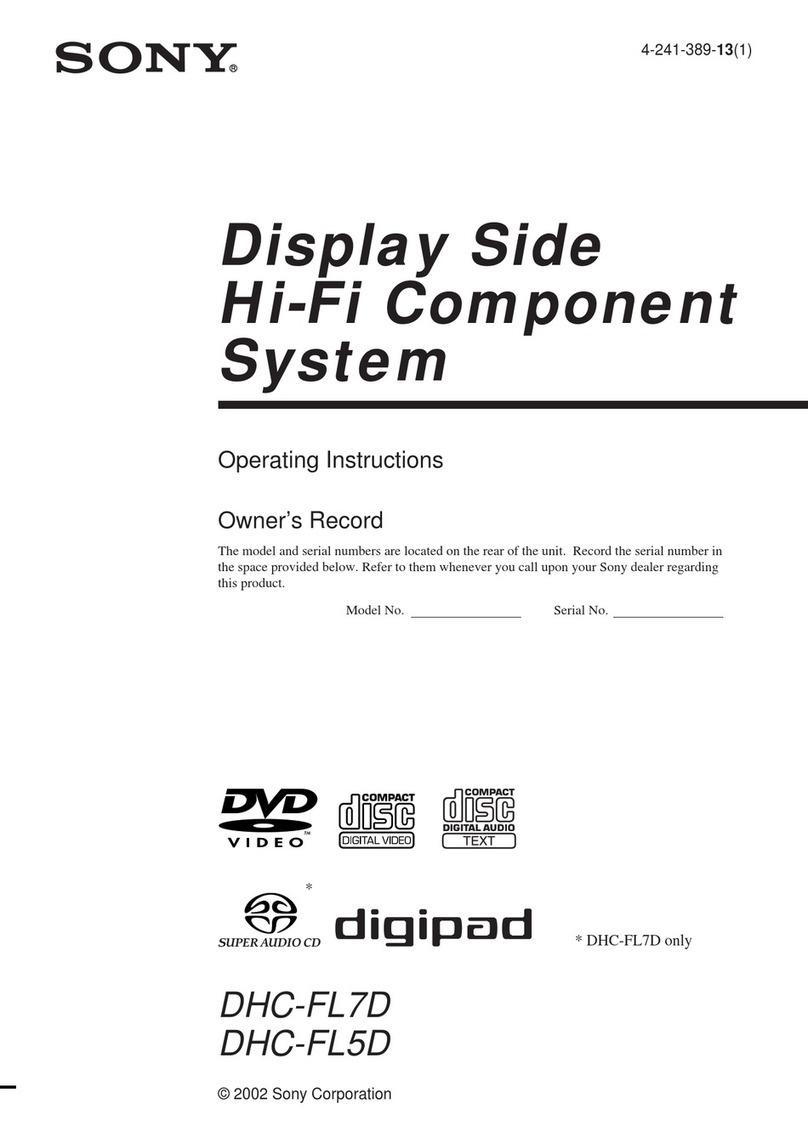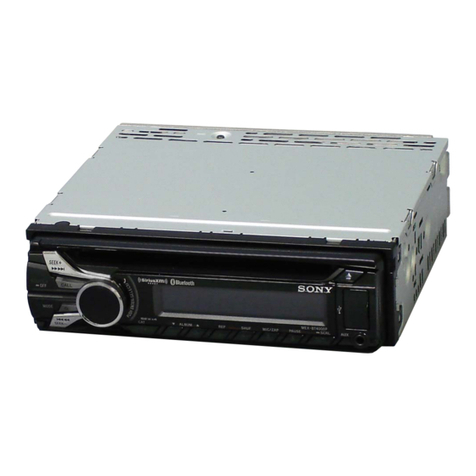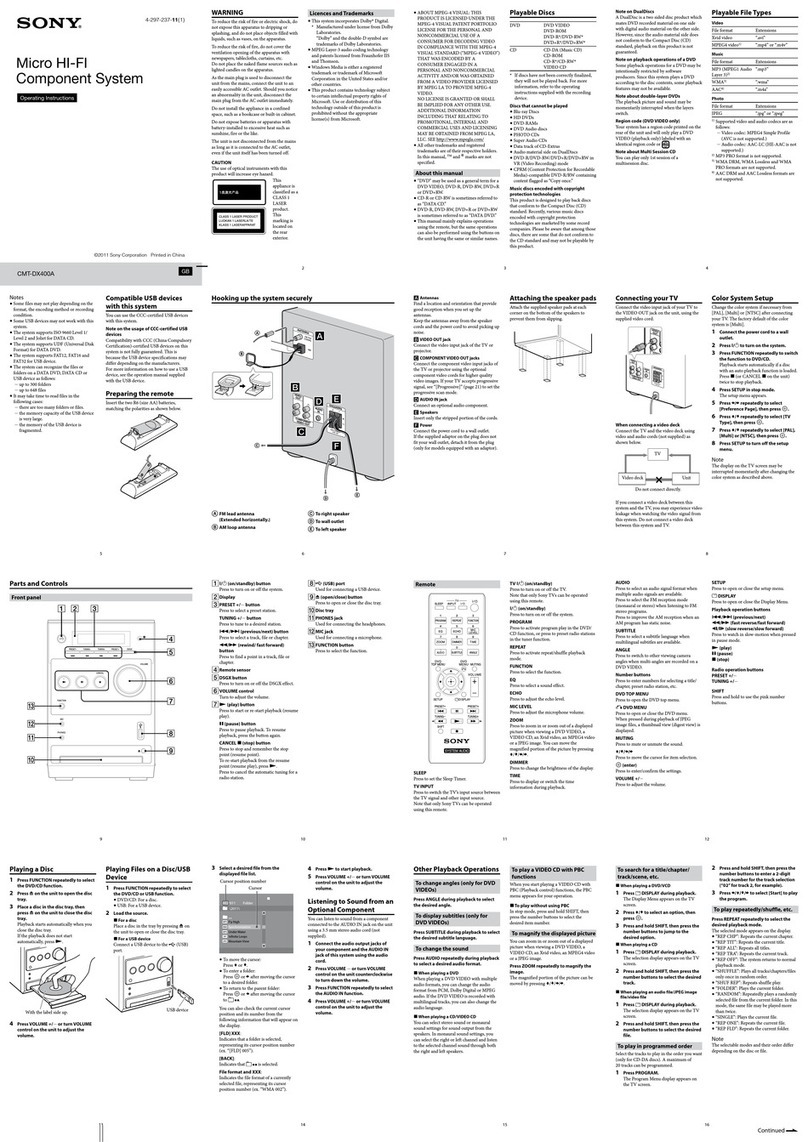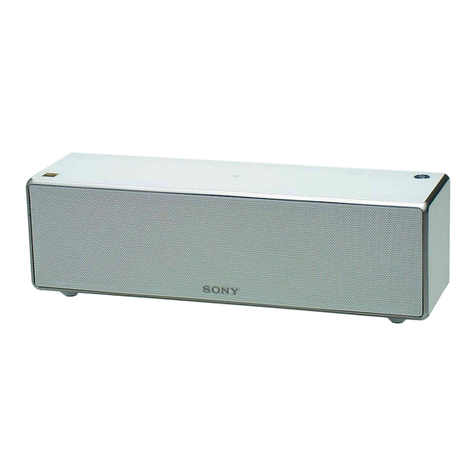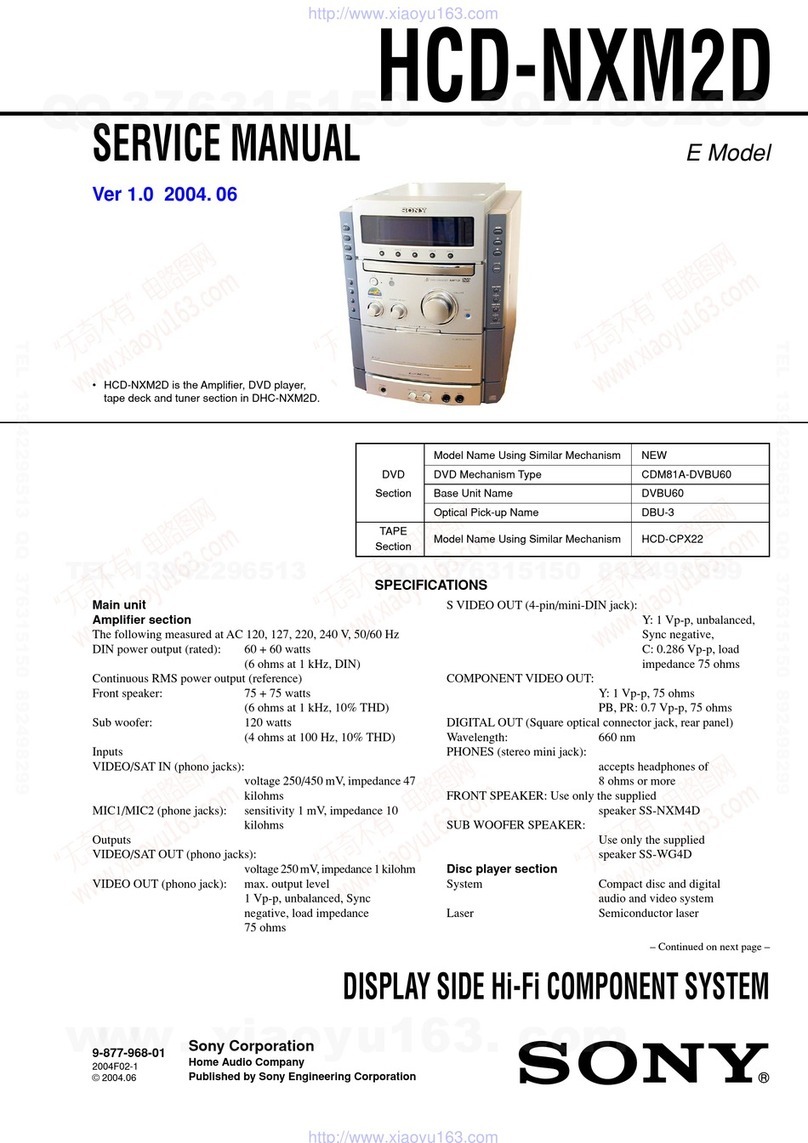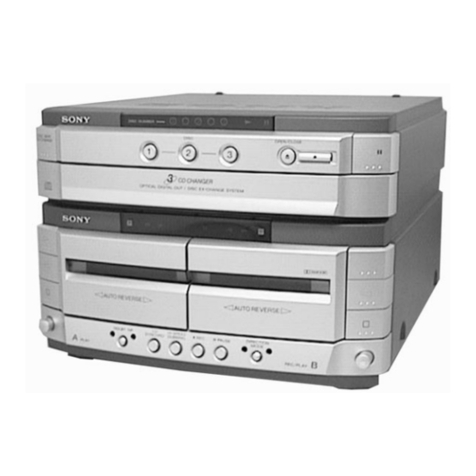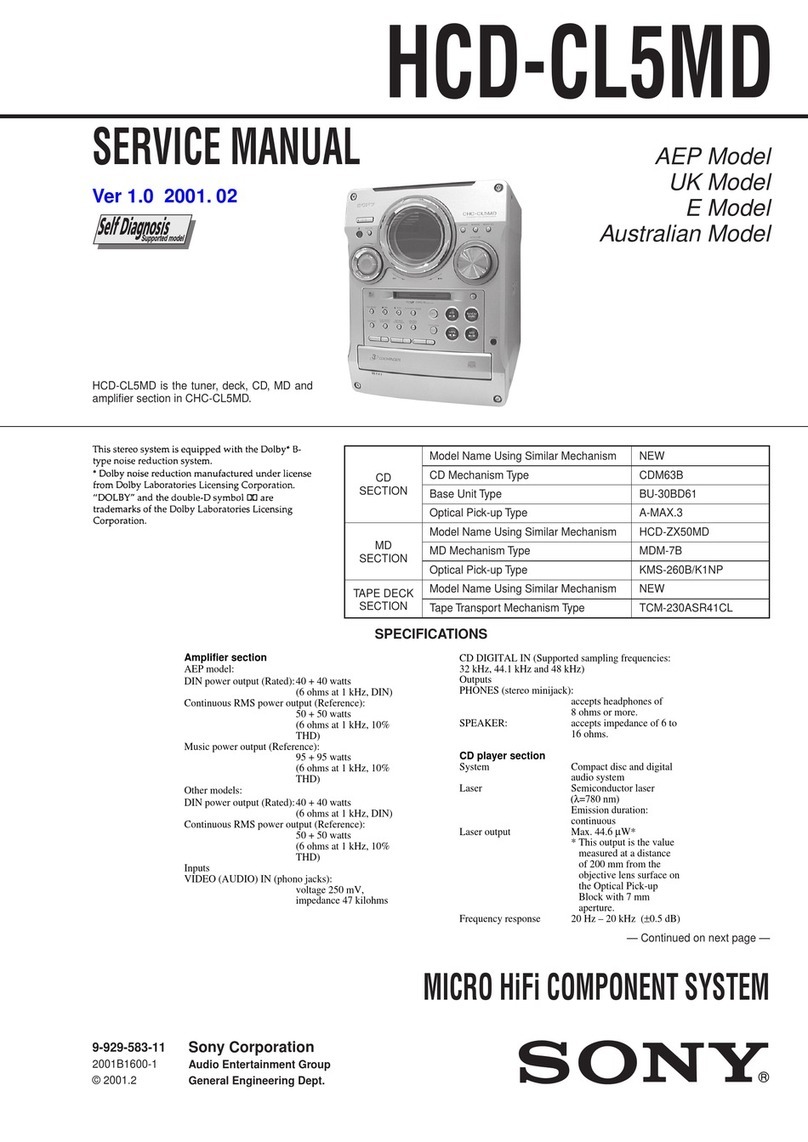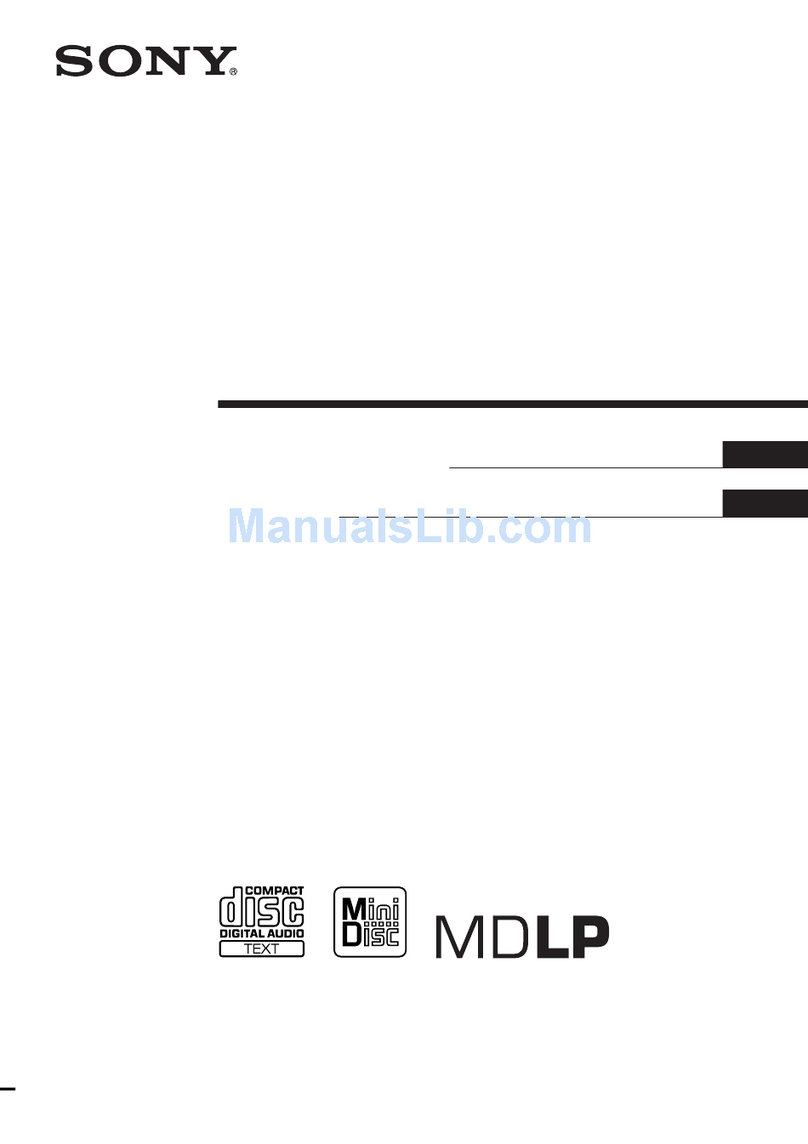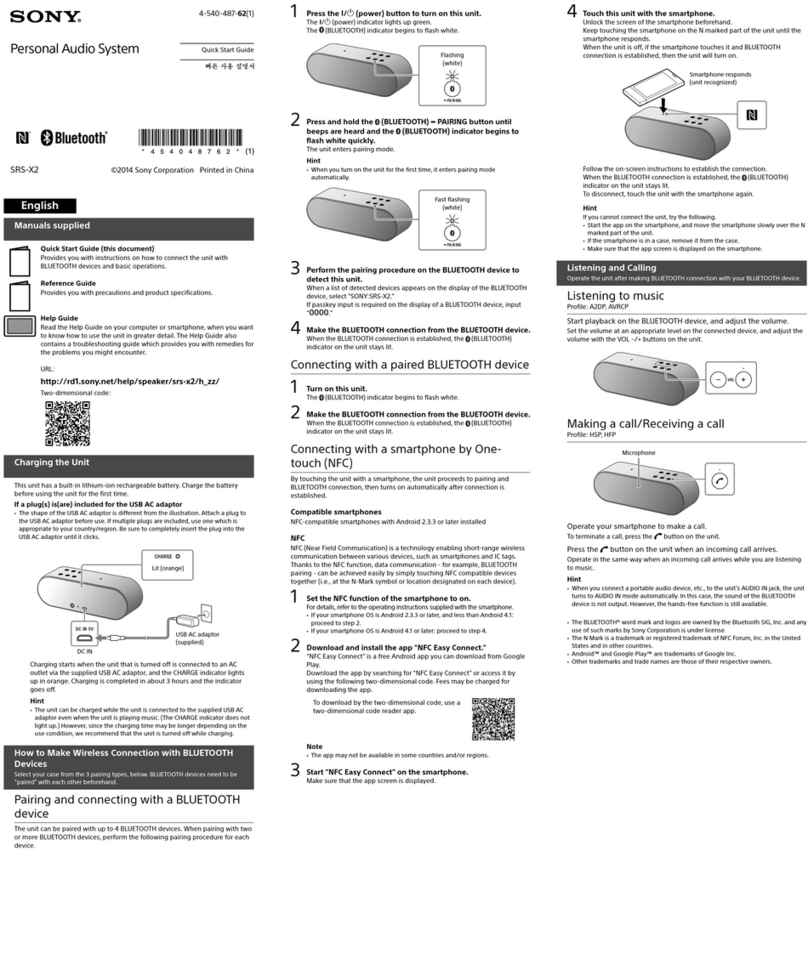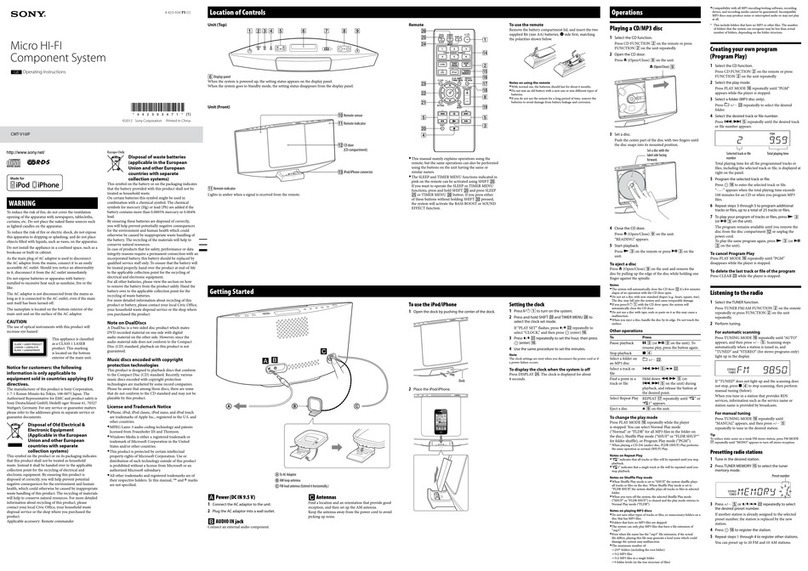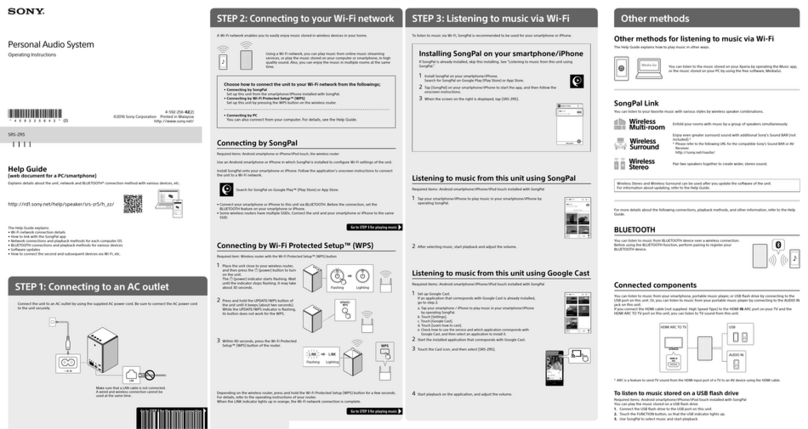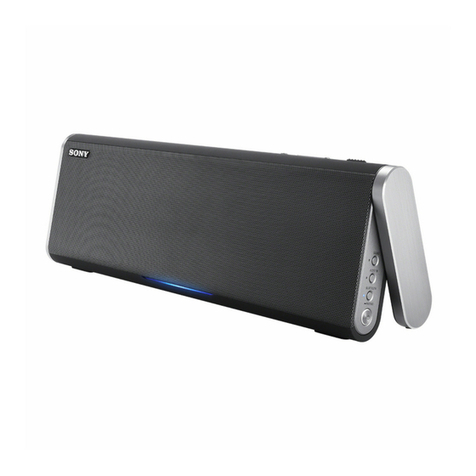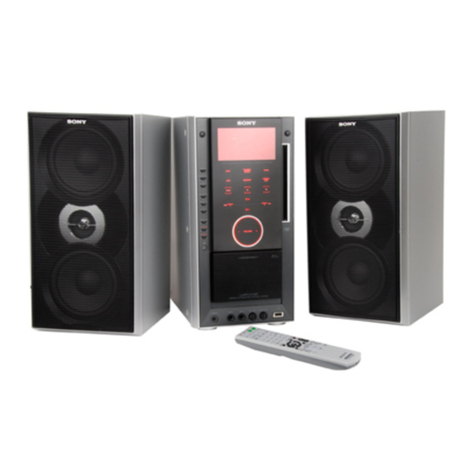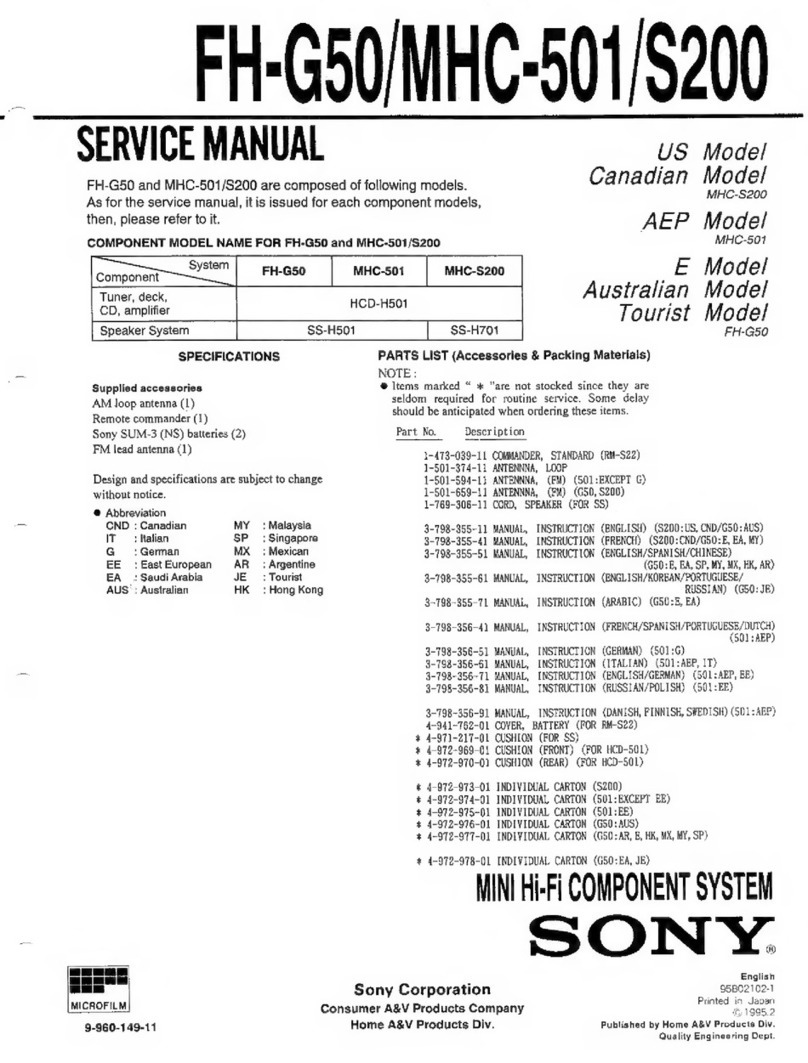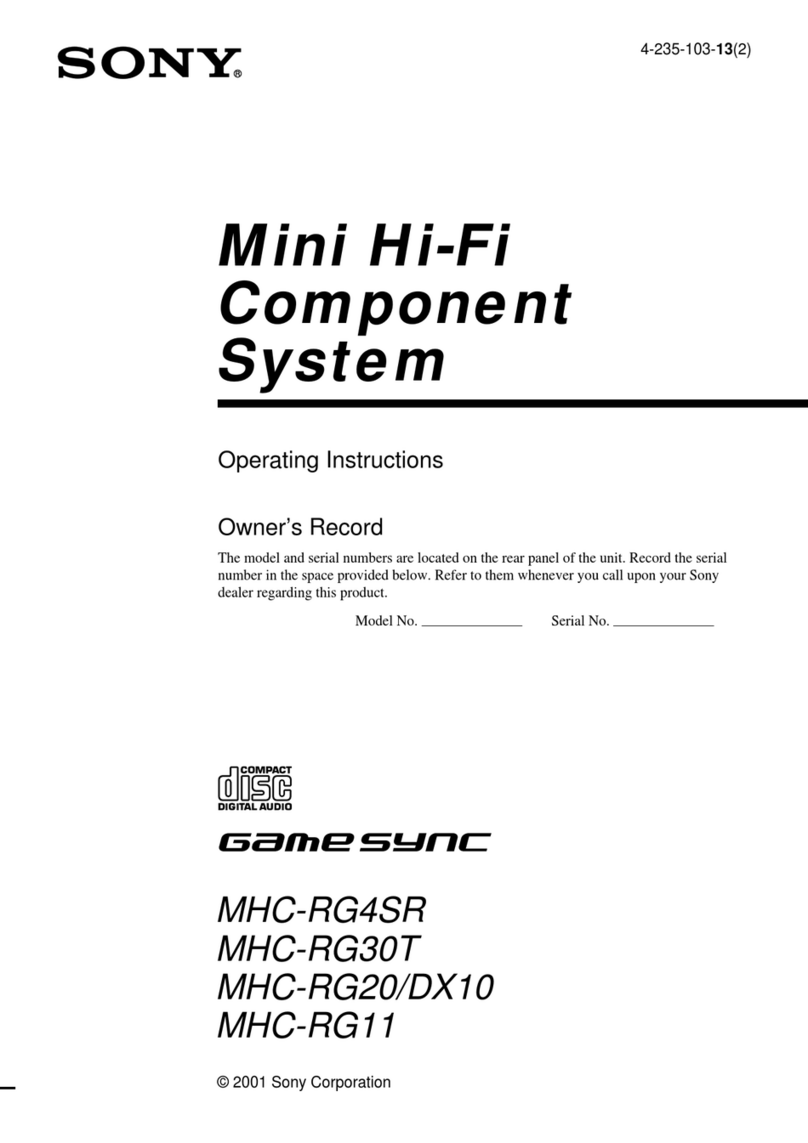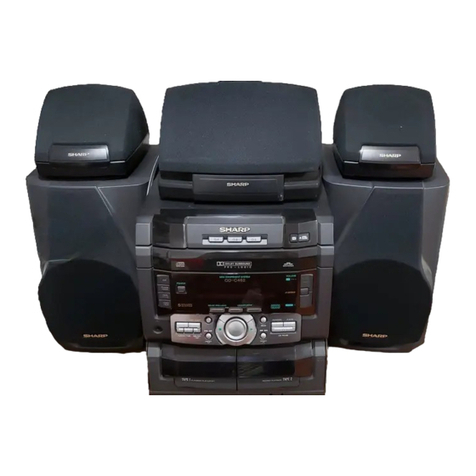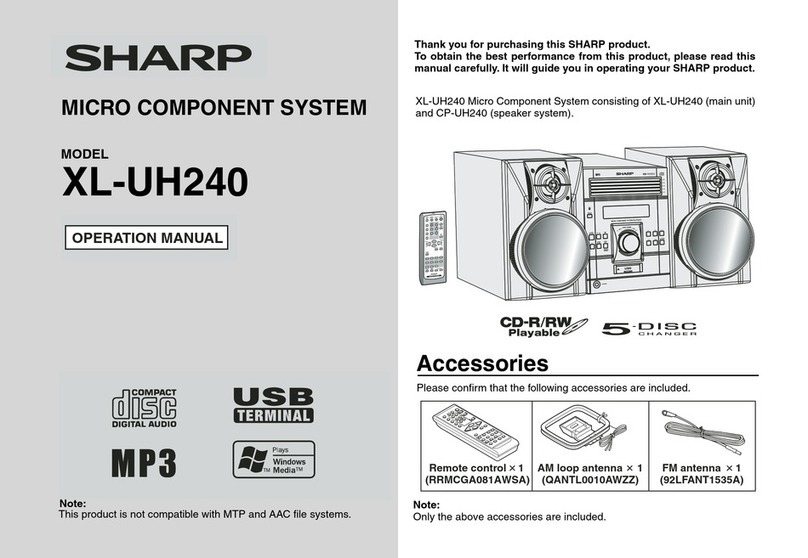
2
HCD-EP303
TABLE OF CONTENTS
Tuner section
FM stereo, FM/AM superheterodyne tuner
FM tuner section
Tuning range 87.5 - 108.0 MHz
Antenna FM lead antenna
Intermediate frequency 10.7 MHz
AM tuner section
Tuning range
Pan-American model: 530 - 1 710 kHz
(with the interval set at
10 kHz)
531 - 1 602 kHz
(with the interval set at
9 kHz)
European model: 531 -1 602 kHz
(with the interval set at
9 kHz)
Other models: 531 - 1 602 kHz
(with the interval set at
9 kHz)
530 - 1 710 kHz
(with the interval set at
10 kHz)
Antenna Built-in ferrite bar antenna
Intermediate frequency 450 kHz
General
Power requirements
North American model: 120 V AC, 60 Hz
European model: 230 V AC, 50/60 Hz
Australian model: 230 V AC, 50/60 Hz
Mexican model: 120 V AC, 60 Hz
Argentine model: 220 - 230 V AC, 50/60 Hz
Other models: 230 V AC, 50/60 Hz
Power consumption
U.S.A. model: 25 W
Canadian model: 25 W
European model: 30 W
0.5 W (in the standby
mode)
Other models: 30 W
Dimensions (w/h/d):
Approx. 145 ×240 ×252 mm
Mass: Approx. 2.9 kg
Design and specifications are subject to change
without notice.
1. SERVICING NOTES ······················································ 4
2. GENERAL ·········································································· 5
3. DISASSEMBLY ································································ 7
3-1. Front Panel Section······················································· 7
3-2. MAIN Board ································································· 8
3-3. Tape Mechanism Deck (TCM125-2) ··························· 8
3-4. POWER Board, Power Transformer ···························· 9
3-5. DISPLAY Board, HEADPHONE Board····················· 9
3-6. CD Cabinet Section ··················································· 10
3-7. CD Mechanism Deck (CS-21SC-1280)····················· 10
3-8. Cassette Lid ······························································· 11
4. MECHANICAL ADJUSTMENTS ····························· 12
5. ELECTRICAL ADJUSTMENTS ······························· 12
6. DIAGRAMS······································································ 16
6-1. Circuit Boards Location·············································· 16
6-2. Block Diagrams ·························································· 18
6-3. Printed Wiring Board MAIN Section ························ 21
6-4. Schematic Diagram MIAN Section (1/2) ·················· 22
6-5. Schematic Diagram MIAN Section (2/2) ·················· 23
6-6. Printed Wiring Board CASSETTE Section ··············· 24
6-7. Schematic Diagram CASSETTE Section ·················· 24
6-8. Printed Wiring Board DISPLAY Section ·················· 25
6-9. Schematic Diagram DISPLAY Section ····················· 26
6-10. Printed Wiring Board POWER Section ····················· 27
6-11. Schematic Diagram POWER Section ························ 28
6-12. IC Pin Function Description ······································· 31
7. EXPLODEDVIEWS ······················································ 32
7-1. Cabinet Section ··························································· 32
7-2. Front Panel Section -1 ················································ 33
7-3. Front Panel Section -2 ················································ 34
7-4. CD Cabinet Section ···················································· 35
8. ELECTRICAL PARTS LIST······································· 36

